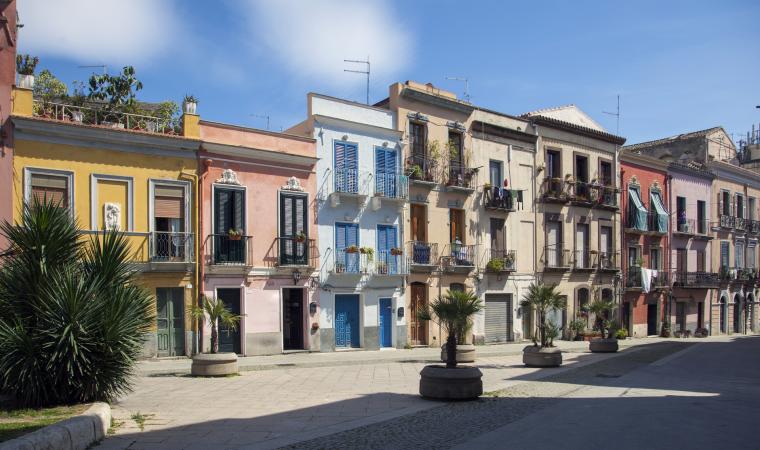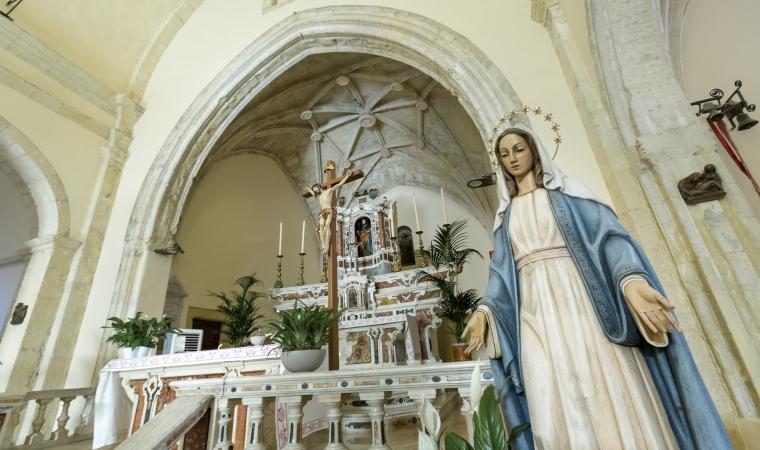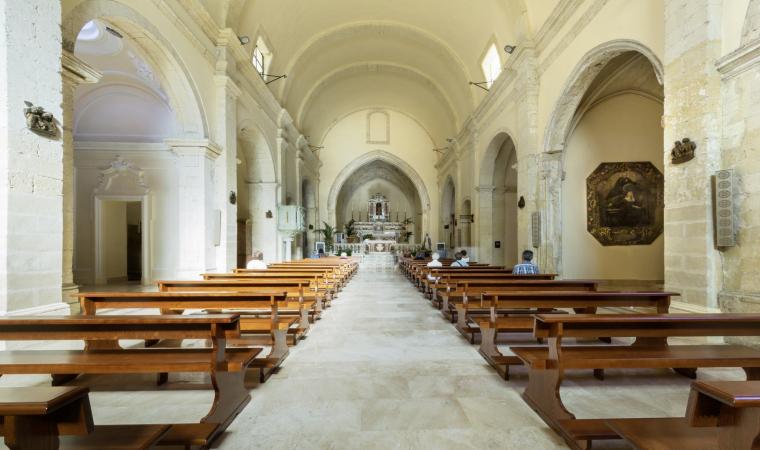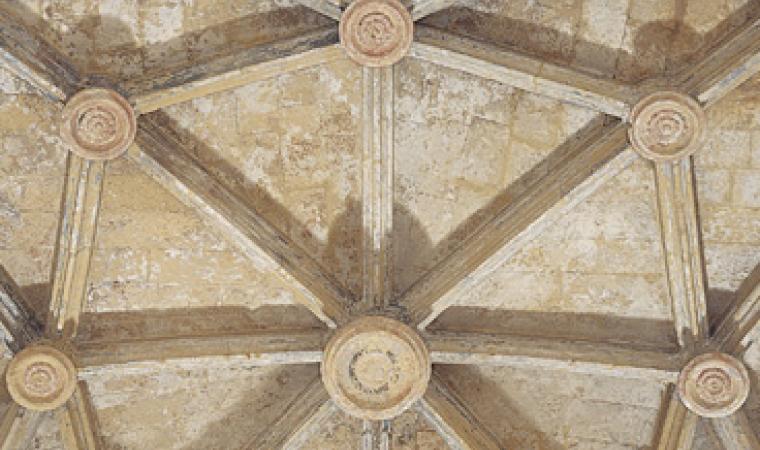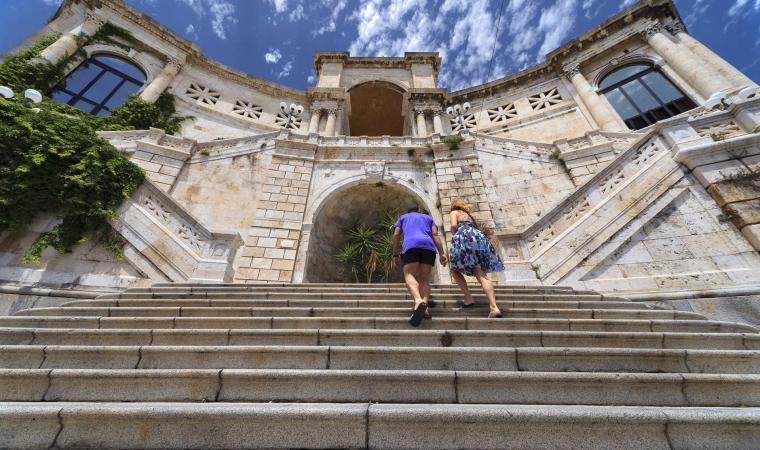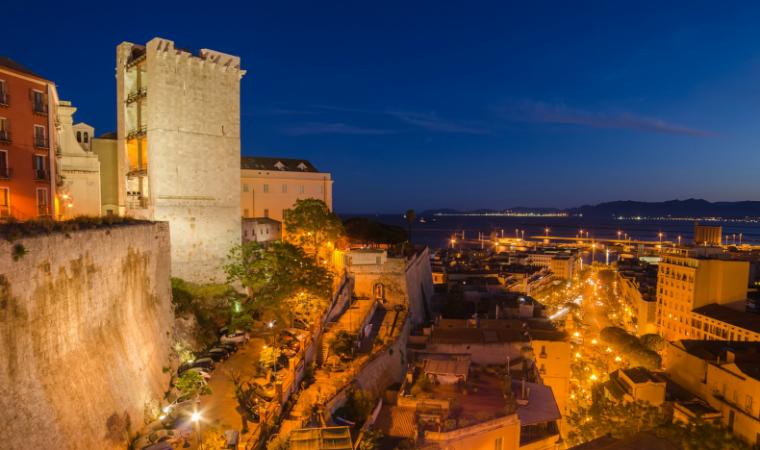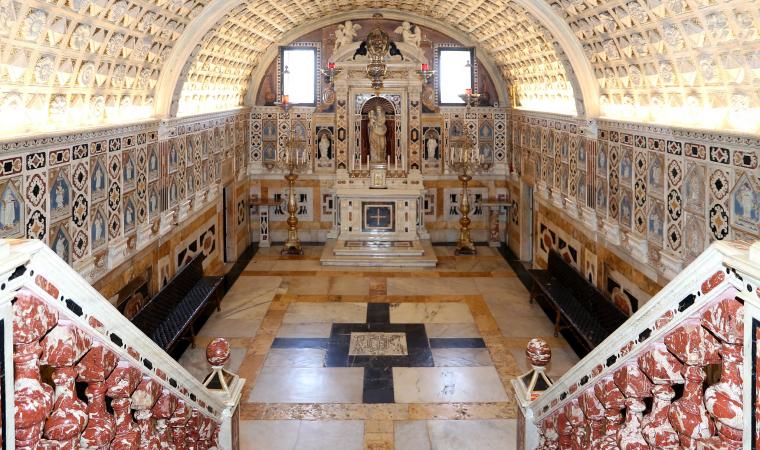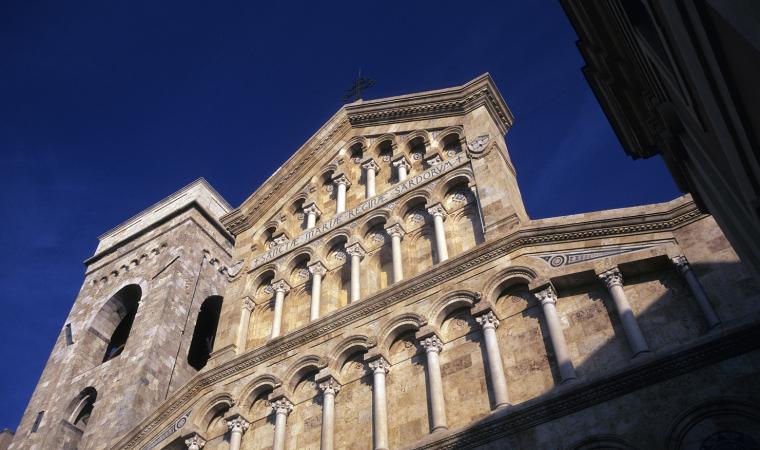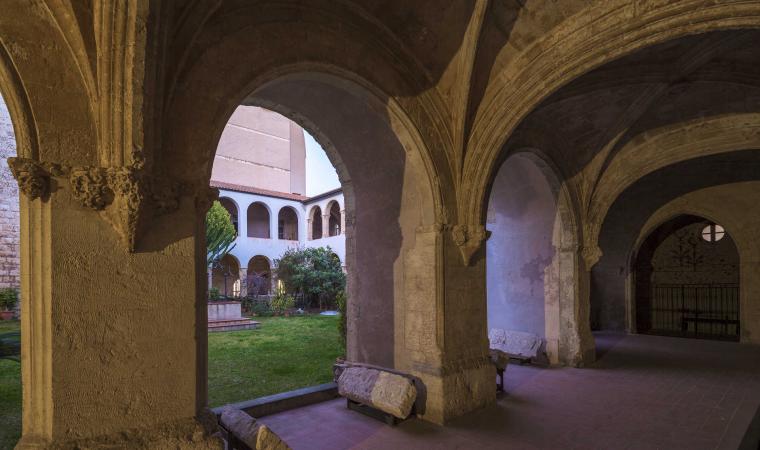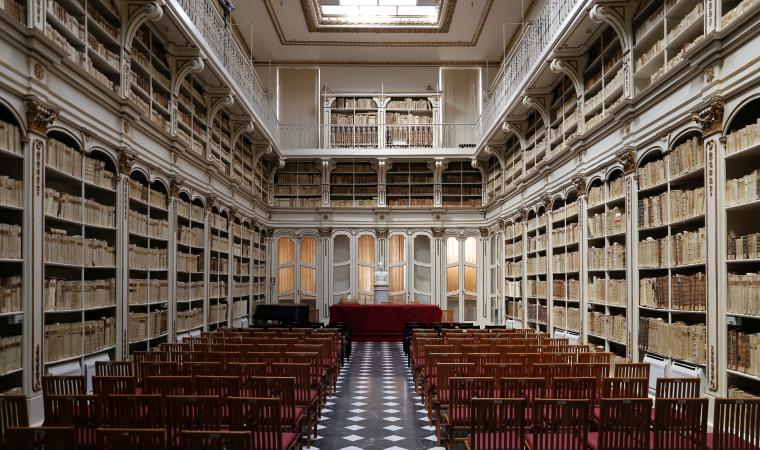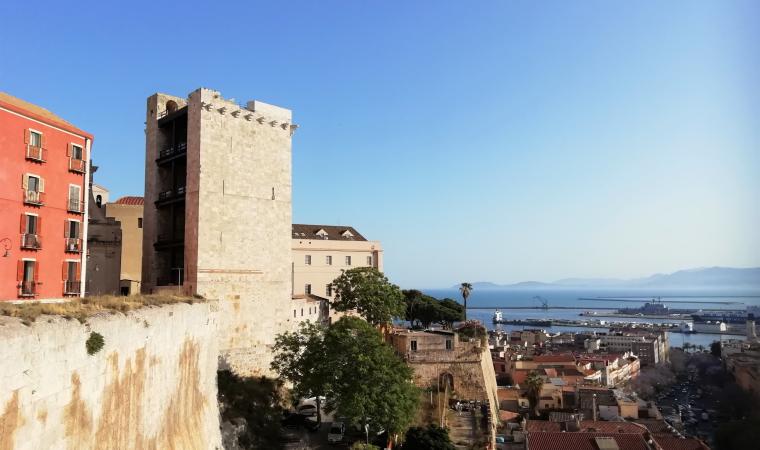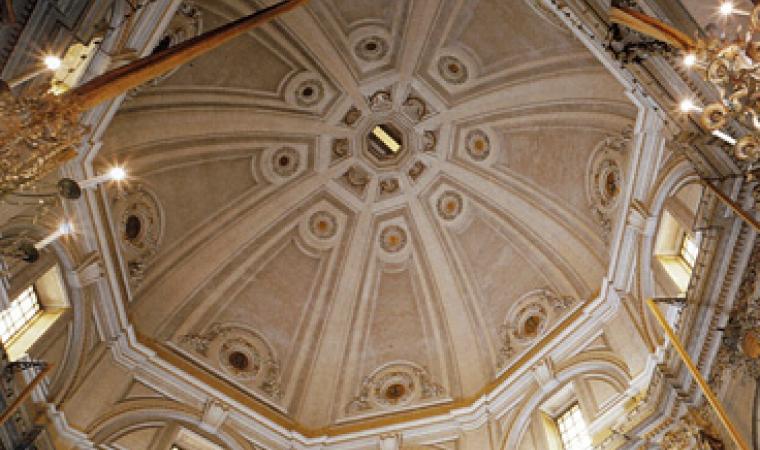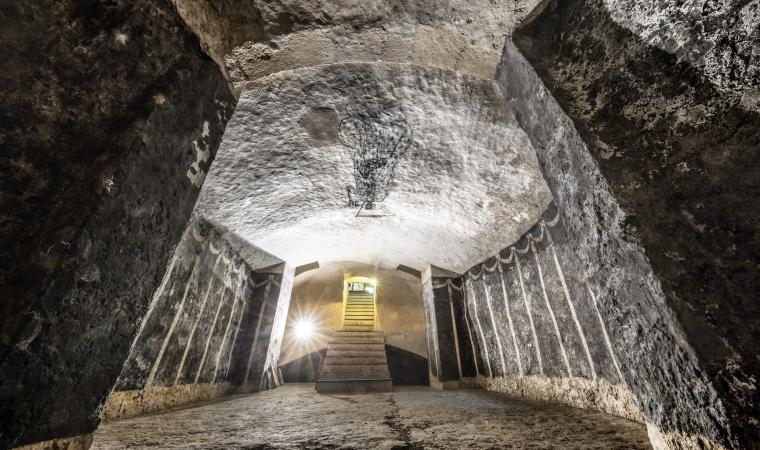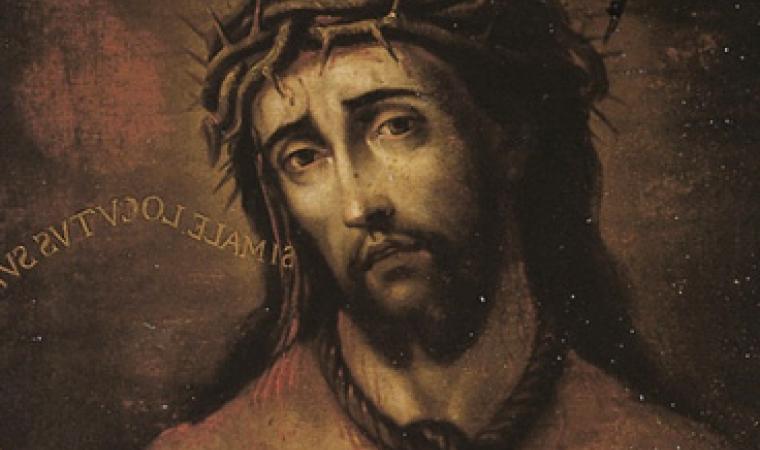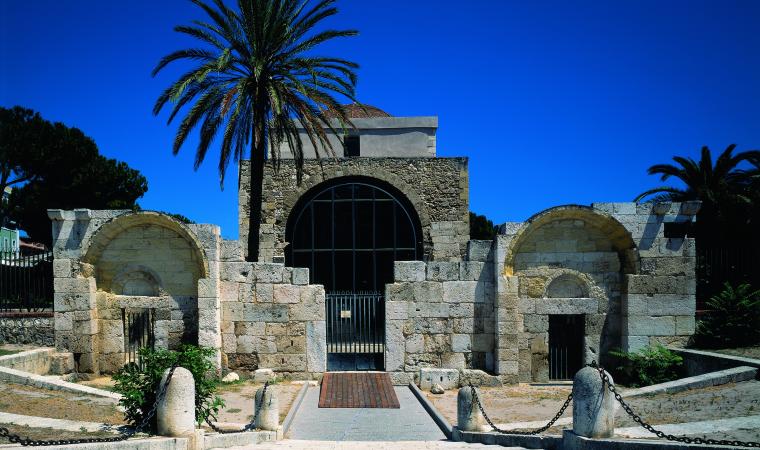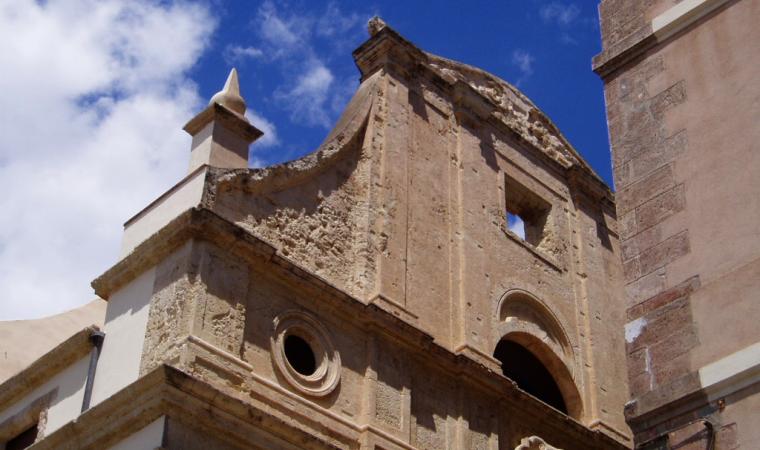It is the parish church in the historical district of Villanova, at the foot of the Castle, and one of the four most ancient parishes in Cagliari. The church of San Giacomo is located in the square of the same name, at the end of two of the town’s famous shopping streets, Via Garibaldi and Via Sulis, and flanked by the façades of the oratories of the Anime (Souls) and of the Santissimo Crocifisso (Holy Crucifix). The first mention of it is in the ordinances of the Councilors of the Castle (1346). It was probably built around that date. A century later it was flanked by the square bell tower, thirty metres high, as is written on a plaque placed at its base. The temple, one of the first examples of Gothic-Catalan architecture in Sardinia, was renovated between the 18th and 19th centuries. In 1630, its rank was elevated to collegiate church. It was consecrated in 1781. The church of San Giacomo, in the capital, acted as a model for various churches in the central-southern part of the Island, between the 15th and 17th centuries, among which the parish churches of Assemini, Atzara, Sestu and Settimo San Pietro.
The Gothic-Catalan façade was replaced during modifications, which took place in the 19th century, by the current neoclassical purist forms, work of the famous architect Gaetano Cima: it is divided horizontally by springcourse cornices and vertically by four sturdy columns with smooth shafts and Corinthian capitals, supporting a triangular tympanum. At the centre, there is a wooden entrance door with lunettes. The interior, which underwent alterations in the eighteenth-century, has maintained its original Gothic layout with one nave and a barrel-vaulted ceiling supported by parastades. You can admire five chapels on each side, almost all with ribbed cross vaults, except for two that have a dome ceiling. On the left side, the first chapel contains an exquisite 15th-century terracotta Lamentation, while the style of the third chapel, dedicated to the Crucifix, is Baroque, like the chapel of the Sacred Heart, second on the right. On the multi-coloured marble altar, which is the work of Giovanni Battista (18th century), you will notice a group of wooden sculptures, also created in the 15th century, made up of a crucifix and statues of the devout women under the cross. The area of the presbytery, which is raised and enclosed by a marble balustrade, consists of a typical Catalan capilla mayor, with a beautiful star-shaped vault and hanging gems. The church also contains an exquisite organ dating back to 1769.


